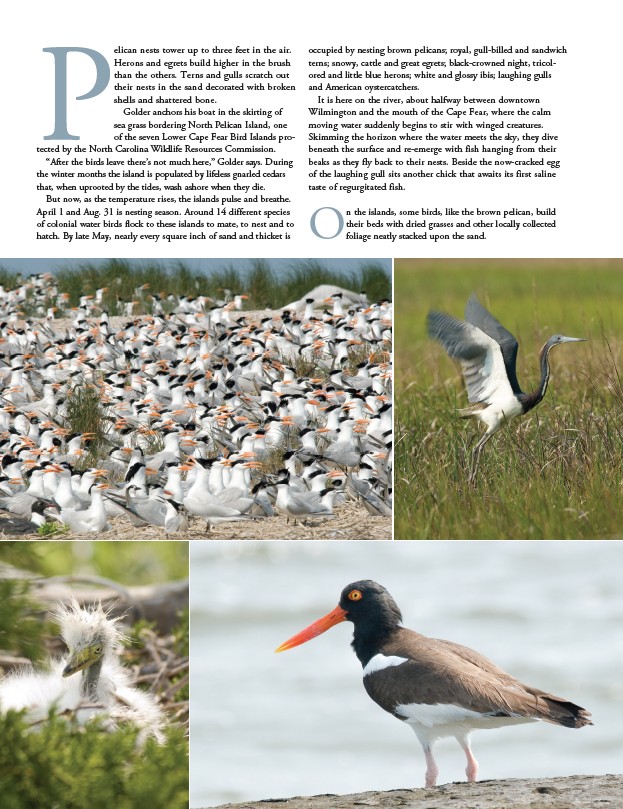
Pelican nests tower up to three feet in the air.
Herons and egrets build higher in the brush
than the others. Terns and gulls scratch out
their nests in the sand decorated with broken
shells and shattered bone.
Golder anchors his boat in the skirting of
sea grass bordering North Pelican Island, one
of the seven Lower Cape Fear Bird Islands protected
by the North Carolina Wildlife Resources Commission.
“After the birds leave there’s not much here,” Golder says. During
the winter months the island is populated by lifeless gnarled cedars
that, when uprooted by the tides, wash ashore when they die.
But now, as the temperature rises, the islands pulse and breathe.
April 1 and Aug. 31 is nesting season. Around 14 different species
of colonial water birds flock to these islands to mate, to nest and to
hatch. By late May, nearly every square inch of sand and thicket is
occupied by nesting brown pelicans; royal, gull-billed and sandwich
terns; snowy, cattle and great egrets; black-crowned night, tricolored
and little blue herons; white and glossy ibis; laughing gulls
and American oystercatchers.
It is here on the river, about halfway between downtown
Wilmington and the mouth of the Cape Fear, where the calm
moving water suddenly begins to stir with winged creatures.
Skimming the horizon where the water meets the sky, they dive
beneath the surface and re-emerge with fish hanging from their
beaks as they fly back to their nests. Beside the now-cracked egg
of the laughing gull sits another chick that awaits its first saline
taste of regurgitated fish.
On the islands, some birds, like the brown pelican, build
their beds with dried grasses and other locally collected
foliage neatly stacked upon the sand.
42
WBM july 2011